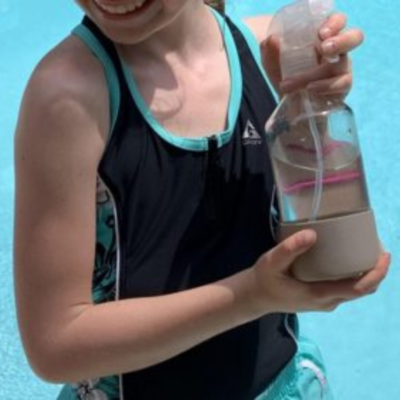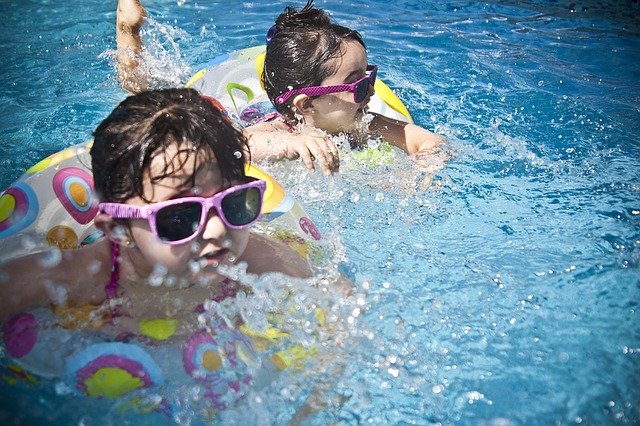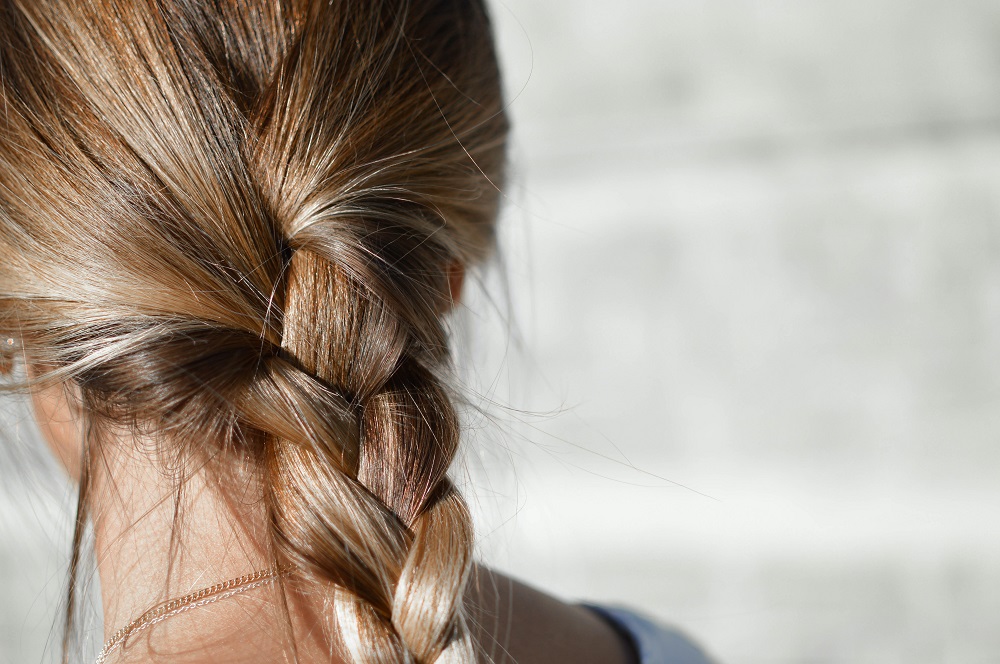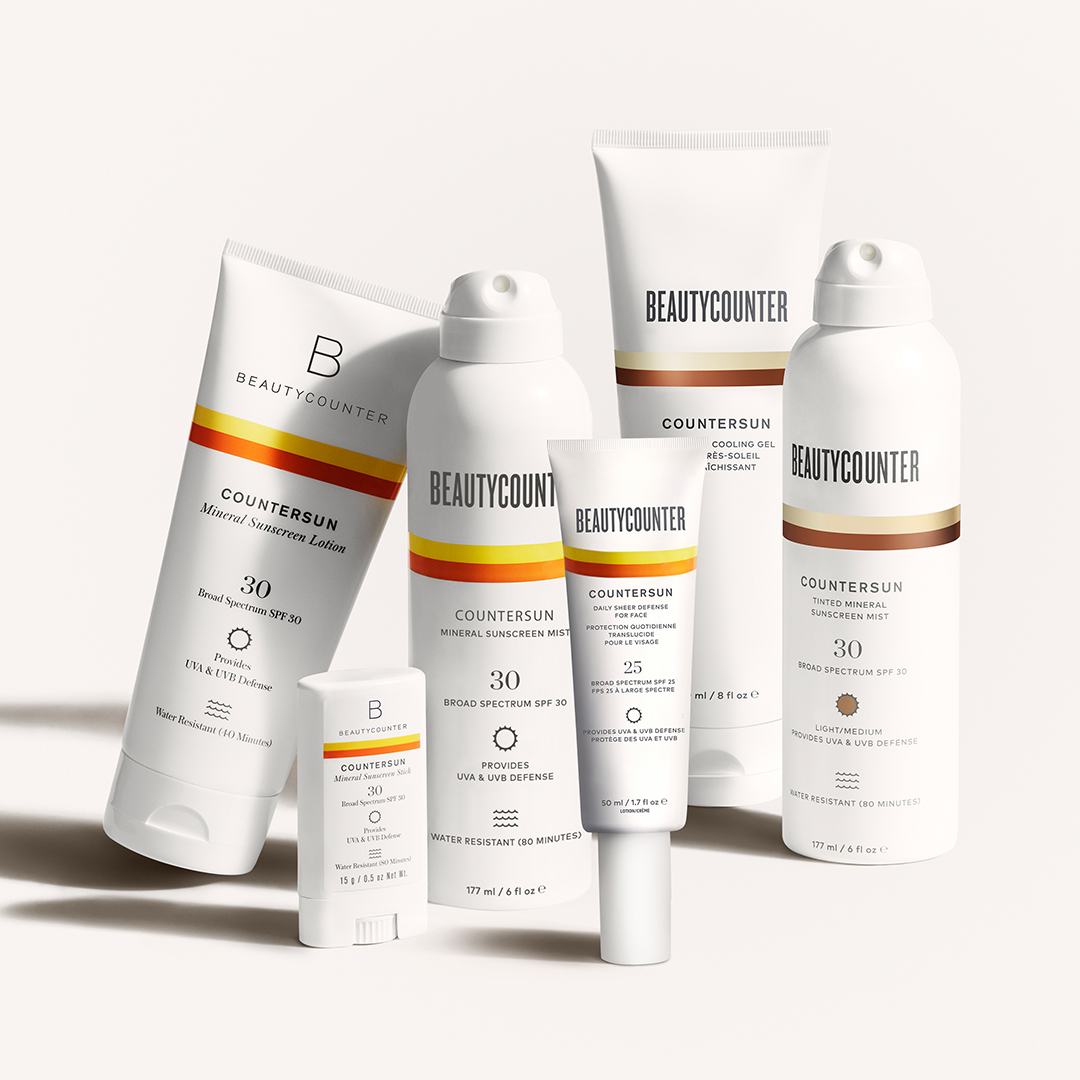Five Non-Toxic Ways To Protect Your Swimmers From Chlorine

*This post contains affiliate links. That means that if you make a purchase after clicking on a link I may earn a small commission at no extra cost to you. These links help to pay for materials so I can keep researching and creating this content. Thank you for your continued support.
I grew up swimming on the swim team in public pools so full of chlorine that I am sure you could have smelled me coming from around the block. The house we’ve lived in for 17 years has a chlorine pool. My 3 kids have grown up swimming every day in the summer – just as I did. I never thought anything about chlorine exposure until I developed Hashimoto’s Thyroiditis, an autoimmune thyroid disease, and hypothyroidism. I started doing research and learned how chlorine affects our health and I want to share those findings with all of you.
Skin Irritants
Swimming in a chlorinated pool means exposure to known skin irritants that can cause skin to become dry and itchy.Asthma, Cancer, & Skin/Throat Irritation
Research suggests that chlorine in swimming pools can increase rates of asthma, cancer, and skin/throat irritation.Thyroid Complications
Bleaching Agents
Trihalomethanes, aka Chlorine Byproducts
Chlorine Byproducts- In addition to direct risks, chlorine reacts with organic matter to form chemicals known as trihalomethanes, commonly called “disinfection byproducts.” These dangerous byproducts (including chloroform) are released when chlorinated water reacts with organic matter from swimmers such as sweat or urine. You can read more about trihalomethanes in the EWG 2013 Tap Water Guide.Five Non-Toxic Ways To Protect Your Swimmers From Chlorine

Wear a Swim Cap & Goggles
A tightly fitting swim cap and pair of goggles prevents the chlorinated water from further reaching the hair and eye area.

Get Wet Before You Get Wet
If possible, get wet before swimming and rinse off afterward. Wetting skin and hair reduces the amount of chlorine you skin and hair can absorb. Grab the hose or some water sprayers and make it fun!

Care For Your Hair
Create a layer of hair protection - Spray damp hair with an NON Toxic Hair Conditioner (see my easy recipe at the end of this post).

Use the Correct Sunscreen
Especially DO NOT wear chemical sunscreen in pools with chlorine.
“Researchers from Lomonosov Moscow State University have discovered that the world’s most popular active sunscreen ingredient, avobenzone, breaks down into something far more sinister in chlorinated water. Two of the chemicals it produces upon mixing with the water, phenols and acetyl benzenes, are of particular concern because of their toxicity. This reaction takes place on your wet skin when the sunscreen reacts to UV radiation and chlorinated water, and the chemicals have been linked to problems like immune system damage, infertility, and cancer. In swimming pools that use copper salts to make the water look blue, this reaction is even worse. In that case, the sunscreen can break down into bromoform, a substance that has been linked to nervous system disorders, liver problems, and kidney problems. In addition to sunscreen, avobenzone is often used in moisturizers, creams and lipsticks that offer SPF.” 2,3
Form a skin barrier with nourishing SAFE Beautycounter Countersun mineral-based sunblock that contains an effective shield from UVA and UVB with non-nano zinc and California Poppy. This Smooth, nourishing formula blends evenly onto skin with limited white residue. The Beeswax, Citrus Aurantium Dulcis (Orange) Peel Oil, Aloe Barbadensis Leaf Juice, Citrus Limon (Lemon) Peel Oil, Citrus Reticulata (Tangerine) Fruit Extract, Citrus Reticulata (Tangerine) Peel Oil, Eschscholzia Californica Leaf Cell Extract, Mentha Piperita (Peppermint) Oil, Mimosa Tenuiflora Bark Extract along with the non nano zinc provide a partial barrier for the skin protecting against the chlorine entering and the sun’s damaging rays.

Vitamin C
Treat skin, hair and swim gear with a vitamin C solution. Vitamin C naturally neutralizes chlorine! I make After Swim Chlorine Neutralizing Spray. See the full recipe below.
Both ascorbic acid and sodium ascorbate (two common forms of vitamin C) will neutralize chlorine.
HOW TO MAKE AFTER SWIM CHLORINE NEUTRALIZING SPRAY
Directions: Mix 1/2 tsp sodium ascorbate with 4 ounces of distilled or reverse osmosis water.
(Use within 24 hours. The solution breaks down and loses effectiveness after 24 hours.)
Use: Generously spray ‘After Swim Chlorine Neutralizing Spray’ all over skin and hair immediately after swimming to neutralize the chlorine.
*Tip: Add a teaspoon of sodium ascorbate to an empty 8 oz water bottle and bring it to the pool. After swimming take the bottle to the shower and fill with water, shake to combine then dump over your hair and body.
Notes on Vitamin C Shelf Life:
Both ascorbic acid and sodium ascorbate are affordable and have a shelf life of at least one year in a dry form (stored in a cool, dark place). However, once it is mixed into a solution, the vitamin C degrades in a day or two. Mix just enough solution to use each day.
Chlorine Removing Post-Swim Routine
PROTECT YOUR SKIN: We follow a simple spray and shower routine to naturally protect ourselves from chlorine damage. After swimming spray off with After Swim Chlorine Neutralizing Spray and bathe.
For extra protection: Mix Vitamin C into shampoo or body wash to neutralize chlorine or add a few teaspoons of vitamin C to the bathtub and swish. You can also use Vitamin C Tablets in your bathtub.
PROTECT YOUR HAIR: You can protect your hair from chlorine in 3 ways.
- Wet hair before each swim. Wet hair can absorb less chlorinated pool water.
- Apply a natural product that helps prevent chlorine absorption.
- Wear a tight swim cap.
ALL-NATURAL HAIR DETANGLER AND PROTECTANT RECIPES
DIY Hair Detangler and Protectant with Essential Oils
1 Tbsp vegetable glycerin
1/2 cup Distilled or Reverse Osmosis Water
3 drops Argan oil
If you would like a smell, add 1 drop of your favorite essential oil
Combine all ingredients in a glass spray bottle. Shake to combine and shake again before applying. Use a few light sprays as a detangling spray after washing or apply generously to damp hair before swimming to protect hair.
Easy Hair Detangler and Protectant
1 oz of Beautycounter Conditioner
8 oz of distilled water
Combine all ingredients in a glass spray bottle. Shake to combine. Use a few light sprays as a detangling spray after washing or apply generously to damp hair before swimming to protect hair.
PROTECT YOUR SWIM GEAR: This routine has helped reduce the amount of fading and breakdown in our swim suits. Rinse swim suits in a bucket of water with a teaspoon of sodium ascorbate after each use.
Pour the whole bucketful (water, suits, and all) into the washing machine, add a your favorite non toxic laundry detergent (reach out if you need one or consider making your own), run the washer on the delicate cycle, then hang suits to dry.
When I’m feeling lazy, I toss the suits into the washer with a few teaspoons of sodium ascorbate and detergent then run the delicate cycle.
I hope these tips and tricks help you naturally protect your hair, skin, and gear so you can keep swimming and enjoying all of the good, clean fun life has to offer.
